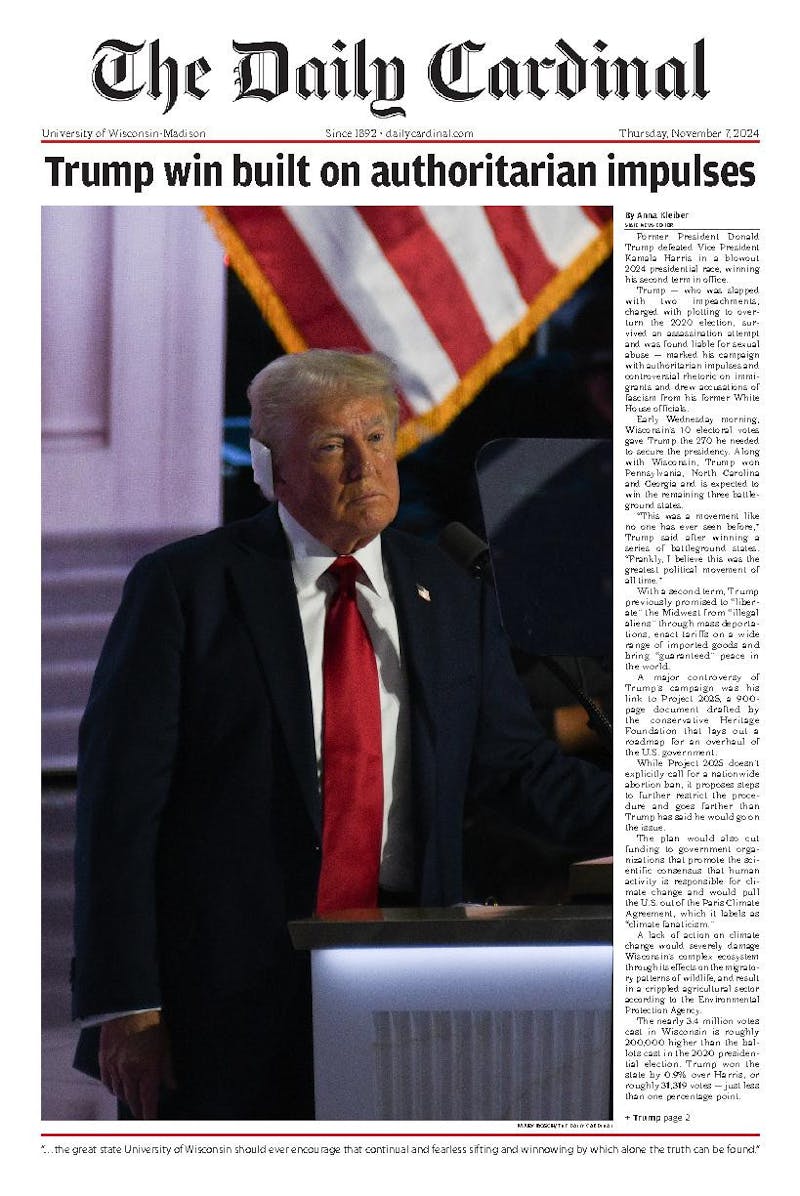In the late 19th century the American system of higher education took a radical change in direction. UW-Madison and other public \land-grant"" institutions across the country were created based on the principle that higher education should be accessible to the widest possible segment of the population. Research conducted within the university should be accessible and applicable to the citizenry. These ideas represented a drastic departure from earlier private, colonial institutions designed primarily to educate only the elite for leadership roles within society.
Most people, including our Legislature and current governor, still agree that these principles are sound and admirable goals. Yet over the last 30 years, the accessibility of higher education, particularly at UW-Madison, has been continually chipped away as we move back toward institutions available for the rich alone.
Public universities are funded by state tax dollars in order to offer educational opportunities and research benefits for all state residents. In the 1970s, state revenue accounted for more than 50 percent of the UW System budget. Today that figure is 27 percent and decreasing. These changes in funding priorities play out in a wide variety of ways---the most obvious are budget cuts and tuition increases.
Tuition increases have become uncomfortably familiar for UW students in recent years, and at the moment there is no relief in sight. For the 2003-'05 budget cycle, the UW System absorbed the single largest cut to any state agency and the largest budget reduction ever taken by the system. In this same cycle, state spending increased by $435 million, and while the UW represents only 9 percent of state spending, it absorbed 38 percent of the cuts.
The consequences of tuition increases are not always apparent at first glance. We hear the word ""diversity"" a lot, and anyone who pays attention to campus dynamics is aware that Madison is sorely lacking in it. Yet middle- and lower-income students, who are disproportionately students of color, are being priced out of the university every year. Presently students from lower-income families make up a shockingly low 7 percent of the student body, and their numbers have decreased since 1992.
Many compare Wisconsin tuition to other Big Ten schools as evidence of the state's affordability, but Wisconsin recently received a ""D"" for tuition affordability in a study conducted by the National Center for Public Policy and Higher Education. The report also found that 10 years ago, 30 of every 100 people age 18 to 24 from minority ethnic groups were enrolled in college in Wisconsin; now only 16 in 100 are. These numbers are moving in the wrong direction.
These changes in priorities are shown in other ways. While the UW System's piece of the budget has been steadily shrinking, the corrections (i.e. prisons) portion has been growing. Since the mid-1980s, the percentage of tax revenue spent on corrections has grown from 2.4 percent to 7.4 percent. Not all residents are equally represented in the prison population either; people of color, particularly African-Americans, are imprisoned at startling higher rates than whites for the same offenses.
Together, the decrease in the UW budget, the increase in the corrections budget and the decrease in minority enrollment leads to the appalling conclusion that more state revenue is spent on imprisoning people of color than on creating educational opportunities.
The homogenization of the university system has devastating political, economic and social consequences. A university that educates only the wealthy or one where less wealthy students are forced to work two jobs to make ends meet will see a decrease in student activism, the loss of human resources and the underutilization of many talented potential students.
A final troubling theme of the last 30 years and departure from the UW's mission of accessibility is the continual privatization of the university. As state revenue dries up, the system looks to private funding that comes in the form of research grants, donations and endowments-but this funding comes with strings attached. Private donors have a growing ability to direct what is researched, what results are published and what programs are funded. Privatization threatens academic integrity and all programs that don't appear to create monetary profit.
It's going to take a huge push by everyone who cares about the university and the direction of the state to refocus priorities toward accessible education for all. If you're interested in learning more you can attend ""The Fight for Funding: A Forum on Budget Cuts at the UW"" at 7 p.m. on Wednesday, TITU.
opinion@dailycardinal.com.





